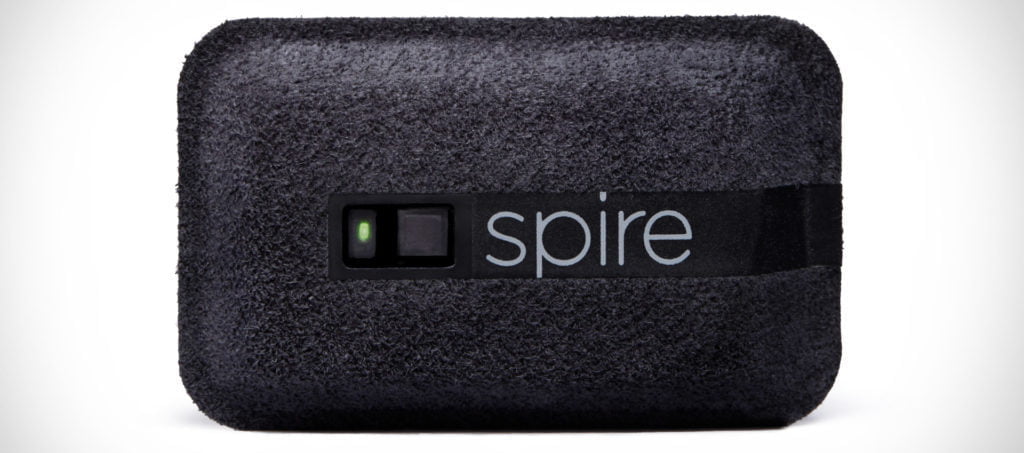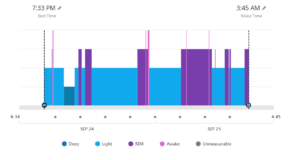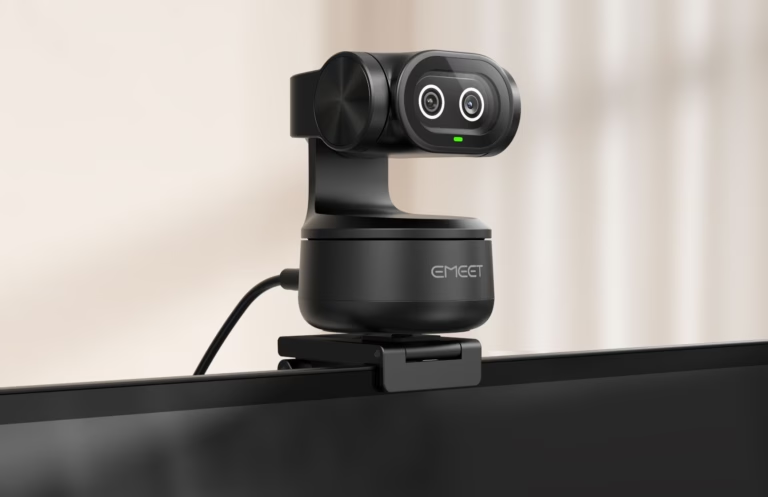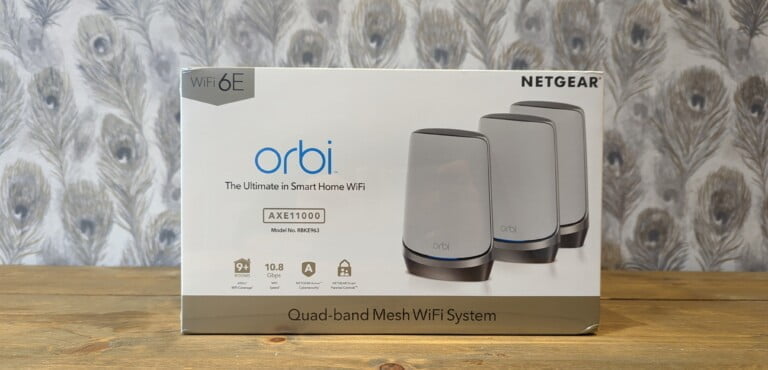Any links to online stores should be assumed to be affiliates. The company or PR agency provides all or most review samples. They have no control over my content, and I provide my honest opinion.
Fitbit has dominated the fitness tracking market for years, but fitness trackers themselves are being displaced by smartwatches, in particular, the Apple Watch, but also Android and Garmin with the sports focussed watches.
Smaller companies struggle to compete, Misfit are gone, as is the Basis Peak, and Withings has changed hands twice in the past few years.
So, wrist-based pedometers and heart rate monitors are a problematic niche to try and gain a market share in; this is why smaller companies need to try new and innovative ways to enter the fitness market.
One such company is Spire, I have not heard of them before they contact me, and apparently, they saw great success with heir first device the Spire Stone.
The Stone is a clip-on device similar to the Fitbit Ultra which was popular several years ago. Unlike the Fitbit this doesn’t just track your steps but introduces an innovative new variable to fitness tracking, breath monitoring. It makes sense when you think about it when we are stressed or exercising we breather faster, conversely when we are relaxed our breathing slows down. This is why meditation and yoga focus on a lot of breathing exercises as the process of slow controlled breaths helps relax you.
Your breathing also differs significantly during sleep, when you enter deep sleep your breathing slows down considerably.
Apparently, this method of activity monitoring has been so successful that 1000s of health professionals recommend Spire
Stanford researchers have even carried out a study with it and found that LinkedIn employees wearing Spire had 37% greater daily calm, 27% fewer anxious days, and 25% more time spent physiologically focused.
So, unlike many wearables, the Spire has some solid medical backing behind it.
Spire have followed the stone up with the Health Tag which is a unique if not unusual approach to fitness tracking.
Rather than have a single clip-on device, you buy multiple tags which you then glue on to your clothes. They include the same breath monitoring as the stone, as well as step monitoring and now a heart rate monitor.

In order for the HRM to work it needs skin contact, so you need to wear the tags on your undergarments.
The tags have a strong adhesive on them which can handle being thrown in the wash and will remain permanently in place until you peel it off. These don’t need charging they are ultra-low powered and the battery is claimed to last 18 months. That means after the 18 months you need to throw them away.

While I applaud Spire for coming up with something unique, I have several issues with it, but no solution. The eight-pack of health tags costs $299 via the Spire website, or the six-pack is £229.95 via Apple UK, and after 18 months, they are useless. In comparison the Apple Watch Series 3 is £279, the Fitbit Charge 3 is £129.99, and the Fitbit Versa £199. All of these watches will last a lot longer than 18 months, and if you are sick of them at that point, or want to upgrade, they have some resale value. The Apple Watch Series 3 sells on eBay used for over £200, so you could get 18 months’ worth of use out of one for around £100.
If you are planning on investing in a large number of tags you optionally buy the smallest number of tags, wait 30 days then join the Spire+ Program which costs $10 per month and gives you 50% off. If you stay on the program the tags are replaced free of charge, but this will obviously cost you $120 per year. When you join Spire+, you’ll receive detailed reports to help you better understand your health data, compare yourself to national averages, and get additional insights on how you can improve your health.
Then there is the issue of 24/7 tracking, I have to admit I am guilty of having too many clothes, but if I wanted 24/7 monitoring it would just about be possible with the 8 pack. 2 tags for night clothes, 3 for gym, and 3 for daytime. I would have to be extremely diligent with my clothes washing and drying to makes sure I cycle them quickly enough.
That being said, it is a difficult one for Spire, they have a device with breathing tracking and an HRM, I can’t really think of anywhere else on your body you could attach one. Wrist-based trackers won’t track breathing, a necklace wouldn’t have proper skin contact. They could use the Stone design and have it so you fit it inside your underwear, but I guess that would easily come loose throughout the day.
Price is also relative, and you can’t put a price on your health, so if you have a genuine need to track your breathing such as suffering from stress or sleep problems, then this is the best option out there.
It is also worth noting that not everyone wants cheap products, or 24/7 tracking. If you buy enough trackers you would never have to worry about charging your watch again, or the inconvenience or wearing one in the first place. Sports and fitness watches don’t really work with business attire either, so in these cases, it could be that the Spire is the more logical choice.
Set-up
Moving on to my experience with Spire. This is a very new product, and at the moment it is only available on iOS, I don’t use an iPhone as my primary phone, but I installed the app on my partners iPad.
I did try and install it on an iPad Mini 1, but the software was too old, and the device too old to update to the new software.
Assuming you have a device that is compatible with Spire, the set up is a lot easier than I expected. Once you install the software and go through the usual steps, you will need to pair the devices. I was expecting to pair all 8, but you only need to do the 1, and the rest are auto added.
Similarly fitting them couldn’t be simpler, you peel off the sticker and attach them to your undergarments. I attached them to the waistband on 2 pairs of shorts I sleep in, then 3 pairs of lycra undershorts for the gym, and 3 pairs of underwear. In theory, this should allow me to do 24/7 tracking assuming I wash and dry each item after wearing it. In reality, this lasted a few days, while we wash clothes either every day or every other, laziness and a busy schedule means a lot fo the clothes don’t get sorted. My gym stuff gets dumped into one massive draw, and it is a nightmare routing through it trying to find one specific pair of shorts.
Performance
I was concerned that a large tracker tag would bug me, especially when trying to sleep, but thankfully I never noticed the tracker when wearing it at all. This is quite important as having a genuinely discrete tracker helps justify the cost of these little tags.
Sleep
I have some truly terrible sleep patterns, and that’s after improving them by orders of magnitude in the past few years. I used to get 2-5 hours sleep, and I wasn’t one of the people that bragged about it either, I felt dreadful, and it had had knock-on effects for my mental health. I am now in bed for 8 hours getting intermittent sleep, I typically wake up 4+ times a night which would still class my sleep as terrible.
I find all fitness trackers are awful at sleep tracking; they give you a rough idea at best. My Garmin Fenix 5 indicates I either get no deep sleep or 30 minutes top, it rarely has the sleep time correct, and it hardly ever knows when I wake up in the night, even if I physically get up to go to the toilet.
The Spire isn’t a great deal better, it gives you less data about your sleep, giving you a number of hours you were awake, and a graph showing the deep and light sleep.
Some days it is very inaccurate when starting sleep, but most days I would say it is more accurate than the Garmin. It is significantly better than the Garmin when it comes to tracking if I am awake, and this usually is my best way of working out if I had a good sleep, the number of times I woke.
Overall with sleep tracking, I think it is better than the Garmin, but at the same time, I was a little disappointed, with the combination of breathing and heart rate I was hoping for some revolutionary sleep tracker, sadly not.
Steps & Workouts
I found step accuracy similar to most other trackers, but this is highly dependant on you wearing a device 24/7. Personally, I think if you are not wearing a step tracker all day, it is sort of pointless, you get no insight on your activity and certainly no trend data over the week or months.
Automatic workout tracking seems to work out, but it is not in the same league as Garmin. For example, on the 27/9 it identified 1 hour 45 mins of exercise and 1,193 calories. That day I did weight training and incline work on the treadmill. I was on the treadmill for 1:12:32 with a tracked 1,091 calories by Garmin. So it is likely the Spire classed my weights as exercise too, and because I wasn’t moving lots it didn’t track a lot of calories, so it is probably semi-accurate.

Breathing
The most important aspect of this tracker is its ability to track your breathing if it weren’t for this the tracker would be mostly redundant compared to the dozens of other options.
In real life use, I find it an interesting variable but a little challenging to come up with either a subjective or objective opinion.
It works in a similar method to the HRM, you get a resting rate, and you can go into the app to view the current rate. It will then track your breathing over the day and put you into categories of calm, focus, and tense. Calm is when you are breathing slower than normal, focus slightly faster and tense faster still.
Again, just like step counting and all-day heart rate, the usefulness of this is reliant on regular all-day use. If you wear it for 7 hours one day, and 24 the next the number of calm minutes is going to be wildly different.
There is good potential here though, one of the last things I have not adopted as part of my fitness journey is meditation. If I could manage to wear these 24/7 for months at a time, I think there would be some fascinating data on how meditation affects my breathing and how it relates to my sleep.
Spire even have a breathing exercise built into the app that using small circles that pulsate like your breath; you are supposed to slow down your breathing until they turn green. This is a simple exercise which is an excellent way to get people into meditating.
App
The app itself is well design and user-friendly, but I would say it is a bit bare bones. This could be because it is such a new device, or it may be on purpose to keep things simple for users. Considering I used the Fenix 5 it could be that I am too used to being bombarded with data from Garmin. I wear a footpod and chest strap or arm strap, and running data has 34 different data points for running activities.
The app gives you some insight into your daily trends, for example, it may say you were 39% less calm than usual today. It is useful, but I feel like something is missing, it needs to be padded out more.
I would like to see more data and more feedback within the app, and I think this will happen with continued development.
Conclusion
I feel like I may have been overly harsh on the Spire Health Tag, it is not that I think it is a bad product, but I think that this is not a product for the masses but more of a niche health device with some mainstream appeal.
I love the concept of what they are doing, and I genuinely think that tracking breathing over a period of weeks if not months could be useful for monitoring your physical and mental health improvements.
However, I can’t get over the fact that this is £229.95 for a 6 pack which you then have to throw away after 18 months. I recently reviewed the WIW ECG which costs £279 and my conclusion to that was that if you have a heart issue then the price doesn’t matter as your health is more important. I think the same is true here, if you have stress or sleep issues then I think this can be useful in monitoring and therefore reducing those issues, and the value of that outweighs the cost of these.
When writing the conclusion, I realised that based on an individual that suffers forms stress, you might not even need to wear them 24/7. Most people suffer from stress the worst at work, so having a tag on your work clothes only while implementing stress management techniques will allow you to see how your work life improves throughout several months. With this example you could probably get away with a 3 pack which costs £129.95 and using them purely as a way to monitor your stress management techniques means that wouldn’t need to replace them after 18 months, assuming you have things in control by then.
**Update ** Spire have informed me that the tags are recyclable if you send them back to them, this relieves some of the issues I have with their wastefulness, they also informed me that a discount will be available for tags recycled. I have amended the score slightly to reflect this.
**Update 2**
If you join the Spire+ program for $10 per month, replacements are free, and additional tags are 50% off. You will also receive detailed reports to help you better understand your health data, compare yourself to national averages, and get additional insights on how you can improve your health.
Spire Health Tag Fitness Tracker Review
Product Name: Spire Health Tag Fitness Tracker
Offer price: 229.95
Currency: GBP
Availability: InStock
Overall
70%-
Overall - 70%70%
I am James, a UK-based tech enthusiast and the Editor and Owner of Mighty Gadget, which I’ve proudly run since 2007. Passionate about all things technology, my expertise spans from computers and networking to mobile, wearables, and smart home devices.
As a fitness fanatic who loves running and cycling, I also have a keen interest in fitness-related technology, and I take every opportunity to cover this niche on my blog. My diverse interests allow me to bring a unique perspective to tech blogging, merging lifestyle, fitness, and the latest tech trends.
In my academic pursuits, I earned a BSc in Information Systems Design from UCLAN, before advancing my learning with a Master’s Degree in Computing. This advanced study also included Cisco CCNA accreditation, further demonstrating my commitment to understanding and staying ahead of the technology curve.
I’m proud to share that Vuelio has consistently ranked Mighty Gadget as one of the top technology blogs in the UK. With my dedication to technology and drive to share my insights, I aim to continue providing my readers with engaging and informative content.






















